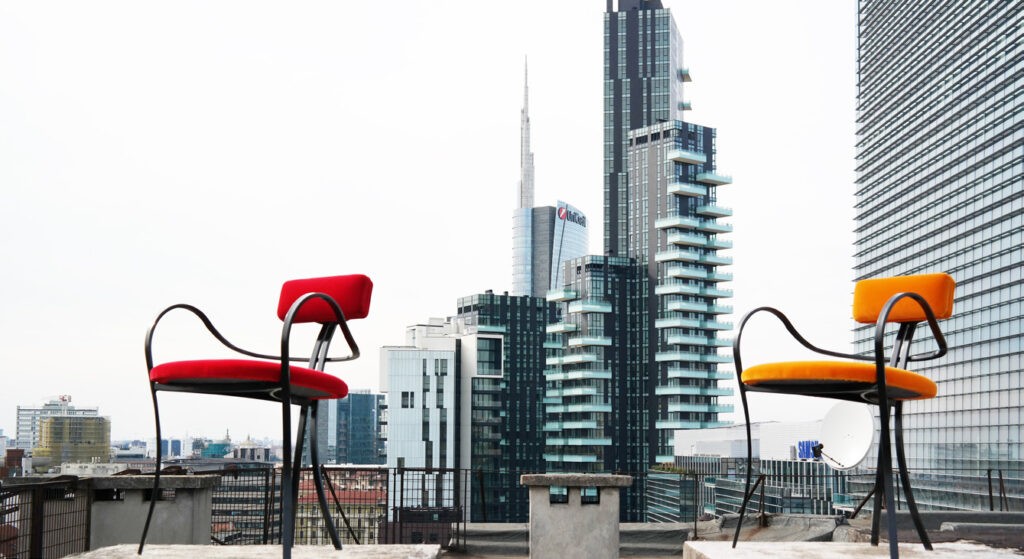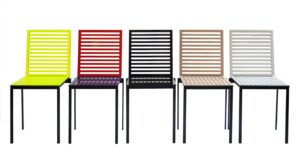Collage Design: the best of Italian design reinterpreted and enhanced with a contemporary approach
What is the history of the COLLAGE brand, and what are the distinctive features that make it unique in the market?
Collage stems from the idea of reviving a forty-year productive history in the career as a designer of Architect Soro within the Italian Design landscape. Collage aims to reunite and re-edit, in a contemporary key, iconic products designed by Architect Francesco Soro and developed by various companies he collaborated with (De Padova, Icf, Driade, Matteo Grassi, Cyrus Company, etc.) with the idea of introducing new products and enriching the range of proposals. ‘Collage’ indeed refers to a work with diverse components that harmoniously interact. What makes us unique is undoubtedly the high craftsmanship: production is handled by artisans and professionals selected from the main excellence districts in Italy, the products are customizable, product care is elevated, and material choices are conscious and exclusively Made in Italy.
Our producers are among the leading companies in Brianza and the Treviso area, where excellence in the sector is found in the Italian panorama.
Could you briefly tell us about the vision underlying your reinterpretation of established products with innovation and contemporaneity, considering your strong connection to the tradition of Italian design? And what current trends inspire your creativity?
Our design idea has a strongly architectural connotation: a project not only on an aesthetic level but in terms of research where functionality expressed in its maximum form is crucial, and the care of the project and detail in every expression is fundamental. The products designed and planned over the past 40 years still have a contemporary connotation today: these elements characterize the projects of Architect Soro and have driven us to relaunch such products. We initially focused on new materials: polyurethane-based fabrics, waterproof and functional, or masonite, a recovery material from pressed and glued waste chips. We then chose some products considered more representative and integrated and revisited them: the Siglo XX Sofa Golden Compass 1981 was also produced as a chair in two different sizes, the Dame de Coeur chair was redesigned in its proportions and lightened for a more functional use. We also played with fun ideas, such as pockets on the armrests or leaving space under the seat to place a bag or iPad.
Finally, we designed new products that fit well into this more consolidated “collage.” Thus, the Tanit chair was born in colored aluminum sheets and iron, contemporary but following the hi-tech and classic line in the case of our Golden Compass sofa (the most relevant award in the design landscape). This formula has also achieved excellent results today: the Tanit chair will be at the next ADI competition. These chairs can be dressed and undressed with a velvet or cotton cover, put on and take off, allowing them to be pop, extravagant, and colorful or more classic in velvet or cotton – two chairs in one – with dual use for both outdoor and indoor, for maximum versatility.
Your philosophy emphasizes the importance of functionality and adaptability of furnishings to the modern needs of spaces. How does this come through in your designs, and what are the main needs and requests of the market that you currently identify?
We care a lot about functionality linked to form and aesthetics, such as the ‘Dame de Coeur’ chair and the ‘Tanit’ chair adaptable to different tastes and contexts, and the ‘Drum’ chair suitable for use in small spaces. We have downsized some products: today, spaces are more restricted than in the past, and it is urgent to optimize architectural space. We also aim for the sustainability of our products, and our upcoming projects are oriented in this direction, already explored through the use of some eco-friendly materials. We talk about ‘Art for use’ for all these peculiarities, ‘small works of art’ adaptable to different areas, from domestic to professional to exhibition, without losing the guiding thread of a clear and exciting identity.
Architect Soro, you have extensive experience in the field of architecture, in Milan and various other parts of the world; what are the principles that guide your approach to your projects?
My approach changes with each project depending on its type: having ranged, as has been said, from the spoon to the skyscraper, I have faced various challenges and themes, remaining always rigorous and respectful of the role entrusted to me. Clients have often been decisive, and if competent, they play an important role in the design. My approach remains free, focused on studying the context, the current architectural landscape, new materials, which I have always given ample space to, and above all, my ideas that, fortunately, still fuel my days.









